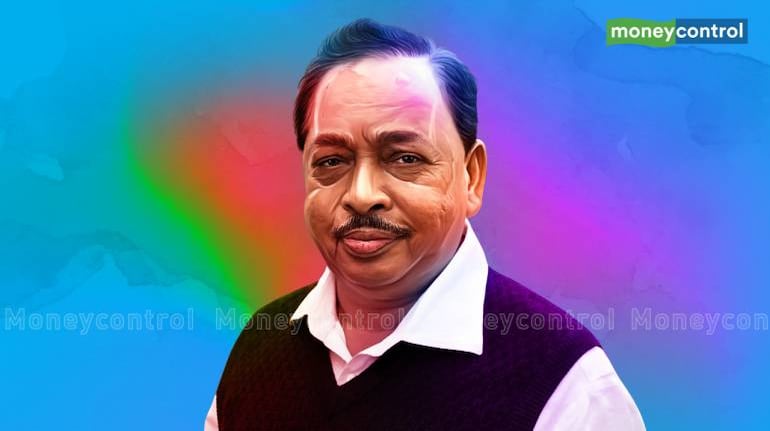Narayan Rane, the new MSME minister, has lot of cobwebs to clear

Though the MSME sector is said to be the second-largest employment creator after agriculture, unskilled workforce and lack of technology have been the bane of the sector. Also, banks are unwilling to lend to the sector fearing that loans will turn NPAs
Micro, small and medium enterprises (MSMEs) minister Narayan Rane has his task cut out, what with the sector being one of the worst affected by the two waves of COVID-19 infections.
Rane’s appointment saw the exit of both Nitin Gadkari and his deputy Pratap Chandra Sarangi from the ministry.
The MSME sector in India is said to be the second-largest employment creator after agriculture. It provides employment to an estimated 11 crore people, and contributes 30 percent to the GDP and accounts for 48 percent of exports.
However, as a result of the consecutive lockdowns in 2020 and 2021, the sector has been facing a wide range of issues like massive liquidity and supply crunch, shortage of labour and non-payment of dues.
Moneycontrol takes a look at the new minister in charge of the critical sector and some of the immediate challenges before him.
Who is Narayan Tatu Rane?
Narayan Rane, 69, began his political career as a shakha pramukh (ward chief) of the Shiv Sena in 1968 and rose up to the ranks to become the Chief Minister of Maharashtra in 1999.
As a Sena member, Rane had held the post of the Leader of Opposition in the Maharashtra Assembly till July 2005, before the Sena ousted him for indulging in anti-party activities. Rane switched to the Congress in 2005 and stayed loyal to the party for 12 years, during which period he even contested the 2014 election from the Malvan seat in the Konkan region.
Rane is a six-time MLA and one-time MLC and was the revenue minister of Maharashtra. He has also handled other portfolios such as animal husbandry, industry, ports, employment and self-employment.
After quitting the Congress, Rane floated his own party, the Maharashtra Swabhiman Paksha, which declared its support for the BJP in 2018 and later merged with it in 2019.
What are the immediate challenges?
One of the biggest challenges that MSMEs face in India is the lack of finance and financial literacy among small business owners. As per CRISIL's SME tracker, the credit gap between the available and required working capital has been widening since 2015. It has now further worsened due to disruptions in the cash flow cycles as a result of the pandemic.
MSMEs continue to face liquidity crunch as there is a reluctance in the part of banks to lend to them due to the fear of non-performing assets (NPAs), and banks are unsure of their repayment capabilities.
As most MSMEs are out of the ambit of the GST network and the resultant lack of documentation, they are forced to resort to lenders outside the formal banking system, with high interest rates. This dry up their savings and credit and are therefore no longer able to sustain operations.
One other challenge is the lack of modern technology and equipment.
Although the government has been saying that COVID-19 is an opportunity for MSMEs to go big on the Make-in-India initiative, MSMEs in India have lagged in the race for modern technology.
MSME owners cannot afford expensive technology. Moreover, the workforce is unskilled and lacks the knowledge to operate it. As a result, MSMEs in India continue to indulge in slow production methods and compromise on product quality.
With the recent mass migration of workers due to COVID-induced lockdowns, MSMEs in India are staring at a lack of workforce, which has raised production costs.
Adding to the woes of the stressed sector is the recent hike in raw material and fuel prices, which has led the small industries to resort to lay-offs in order to cover for the price hike.
For instance, between April 2020 and June 2021, the price of copper has more than doubled from Rs 345 to Rs 745, while the price of steel plates have jumped 82 percent from Rs 45 to Rs 82.
Meanwhile, petrol and diesel costs have reached record highs, crossing the Rs 100- mark. This has shot up the cost of production for MSMEs, which are unable to recover the same in the open market.
Given the capacity of the MSMEs to drive economic development and job creation, a resilient MSME sector is a must to translate the growth story of the country. With a multitude of challenges plaguing the sector, all eyes will be on Rane now.
